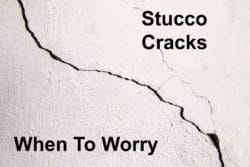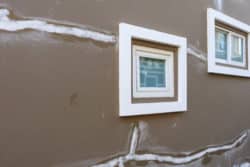Stucco Cracks in New House | Which are Typical or Major
Engineers and builders anticipate stucco cracks in a new house, that a new home with stucco walls will have a little cracking, but not any significant serious cracks. Generally, they are right, and the cracks are just shrinkage cracks or hairline cracks, however, there will be some homes that have serious cracks or cracks that are a warning sign that there is potentially a major problem. It may relate to defective stucco, a structural issue or to a moisture intrusion problem.

Three common causes of stucco cracking in new homes in the first year
There are three common causes that often cause minor cracking in the stucco of new homes:
- Stucco shrinkage
- Settlement
- Wood shrinkage or expansion
Stucco shrinkage cracks

When stucco is first mixed, water is part of that mix. The water causes a process known as hydration: a chemical reaction that occurs in stucco when water is added, This reaction causes the stucco paste to turn into a solid. Basically, the stucco hardens.
- If the sand and stucco mix is not thoroughly mixed or if there is too much sand in the mix, the stucco may be soft; not as hard as it should be.
- If the water and stucco is over-mixed, it will weaken the stucco.
- If too much water is added, the stucco will be weak and there will be more shrinkage cracking of the stucco.
In the big picture, shrinkage cracking occurs because of the loss of surface moisture, which evaporates before the cement sets. The stucco may shrink more than normal if there is a strong breeze or wind, low humidity, or high temperatures that causes the surface moisture to evaporate faster than it can react with the Portland cement.
Settlement of the house
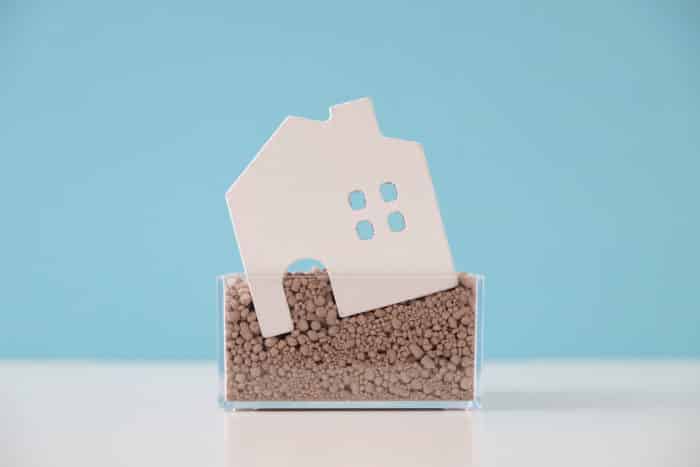
Many homeowners do not realize that their home often settles a little bit in the first year or two. They settle for a number of reasons, including:
- The heavy weight of the house and contents
- The size of the footing may be insufficient for the load on it
- Compaction: if the soils were not properly compacted, the weight of the house will cause more settlement
- Type of soil. Poorer quality of soils will not support as much weight as better load bearing soils
Even if everything was done correctly, there is still a tendency for the house to settle approximately a 1/4 , 1/2 , or 3/4 of an inch, depending on the type of soils. The least amount of cracking, if there is settlement, occurs if the house settles uniformly and the worst scenario is, if there is differential settlement.
Wood shrinkage will cause stucco cracks in a new house
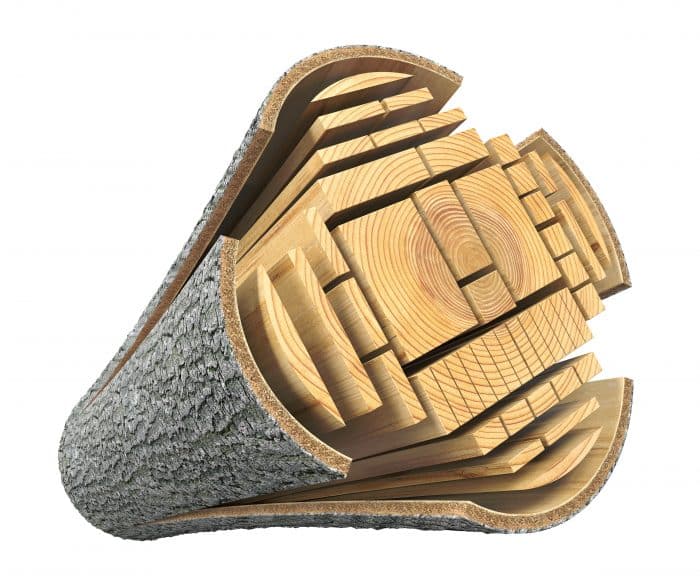
In residential construction the majority of homes use a lot of traditional solid sawn lumber and have for hundreds of years. There has been a trend over the last 30 years, plus or minus, to also use engineered lumber, which is trending upward more and more. Builders like engineered lumber because they can use it for longer spans, there is less shrinkage issues, it has dimensional stability and is structurally stronger.
The vast majority of homes built today have both traditional solid sawn lumber and engineered lumber in them.
Homes that have traditional solid sawn lumber, such as, headers, beams or rim joist, which is still the majority of the homes in the U.S. often have stucco cracking problems due to wood shrinkage. The lumber that is used in these homes often arrives on the construction site with a high moisture content, and from time to time, it will also get rained on. The moisture content by code can be up to 19% and if it gets wet from rain, etc. the moisture content may be even higher.
Once the house is built, the lumber begins to dry out and as it does it shrinks. As the wood shrinks it puts stress on the stucco, as well as drywall, and then the stucco or drywall will often crack. These cracks are usually small and not very serious in nature.
3 Major stucco crack problems
When there are major issues causing stucco cracking, they usually fall within three categories:
- Foundation or soil issues
- Framing issues
- Workmanship Issues
1. Foundation and soil issues
When a home experiences foundation or soil problems a number of things may take place, depending on the severity of the problems. One of those is stucco cracks. As we know it is not uncommon for a new home to settle a little in the first year or two. However, if the soil or foundation movement is moderate or server, then this may be reflected to some extent in cracking stucco. Should the stucco cracks exceed a 1/16 to an 1/8 of an inch or larger, then it might be grounds for concern and possibly an investigation of the cracks by a professional. When cracks are caused by soil or foundation movement, then they often relate to some of the following issues:
- Expansive soils
- Subsidence
- Slope creep
- Seismic activity & tremors
- Differential settlement
- Poor compaction
- Faulty engineering and design
- Frost Heaving
- Seasonal issues, as well as extreme climate issues
Should a new home experience one of the above issues, then it may be reflected by hairline cracks at first, but then they may become larger overtime.
2. Framing issues

Substrate improperly installed. Often stucco is applied over lathing secured to a substrate of plywood or Oriented Strand Board, usually referred to as OSB by contractors. If there is not the proper spacing between the sheathing panels and they get moist, then they often swell; resulting in stucco cracks. If this condition is server enough, occasionally you will spot a pattern that might slightly mirror where some of the joints are between the sheathing.
When the roof of a home is being loaded by the roofing material suppliers with shingles, concrete tile or clay tile, so that the roofers can start roofing the house, a tremendous amount of weight becomes concentrated in just a few areas. Then the weight shifts some as the roofers lay out the shingles or tiles. If this occurs after the home is stuccoed or while the stucco is being applied, then, there may be cracking due to the relocation of weight and the fact that the stucco has not fully cured and gained its full strength.
If a home has just been stuccoed, and the drywallers start hang drywall and banging on the walls, then stucco cracks may appear.
Framing movement and damage due to soil and foundation movement is common. When a foundation or a concrete slab shifts or moves, then the wood framing on it, does so likewise. Framing connection points may separate slightly or fail, rim joist, headers, or shear walls may shift or move, and this likewise causes cracking.
3. Workmanship issues

Stucco needs to cure properly between coats in order to achieve full strength. Additionally, it is usually recommended that the stucco be kept moist during part of curing process. This is necessary, so as to allow the hydration process to continue so that the stucco will get hard. The weather, temperature, wind and humidity often determine how long and when the stucco needs to be kept moist. At times, these factors are not sufficiently taken into consideration.
Traditional hard coat stucco curing recommendations
- Scratch coat 3 to 5 days to cure
- Brown coat 28 days recommended for curing
- Finish coat (top coat) will normally dry and set the same day but full curing is 28 days
Fast Track
Home builders know that time is money, therefore they will try to speed the process of building a home as fast as they can; especially track builders. They often push their sub-contractors to get everything done quickly and on schedule. It is not uncommon for it to be an un-realistic schedule. When doing so, things often fall through the cracks or there is not enough time to do everything properly. A good example of this is the failure to allow proper cure times recommended by the manufactures of stucco products or that are recognized stucco industry standards.
If stucco does not have enough cure time between coats, then it may crack more or be weaker.
Lathing workmanship and stucco thickness
Unfortunately, once a home is stuccoed, the lath cannot be seen. If lath is not installed properly or not secured properly, then it is not uncommon for the stucco to crack. When stucco has been applied too thin or unevenly over the lath, there is also a tendency for it to crack. At times there may be a faint lath pattern that shows through the stucco. If the stucco has been applied too thick over the lath and the lath is not secured in place properly, then the heavy weight of the stucco my cause it to break loose from the wall or where there are horizontal applications of the stucco. In rare circumstances people are injured when the stucco, or stucco and lath separates from the framing or substrate and falls.
Cracks in a home under 1 year of age that may be a “Red or Yellow” flag of a possible problem with your stucco

Check for these “Red or Yellow” flags
- Cracks that are over 1/16 of an inch and especially of cracks over 1/8 inch wide.
- Cracks that not only run through the stucco, but appear to continue into the foundation, basement wall or the homes concrete slab.
- Cracks that are “V” shaped, they get wider the further up they go.
- Cracks where the parallel edges are offset.
- Cracks that appear to be getting bigger and bigger over time.
- Cracks that open and close seasonally or that appear to be active.
- Numerous cracks, many more than you would expect.
- Cracks, that if you go into the house, have cracking in the same area of the drywall.
- Cracks that have stains on the edges or stains that appear to be coming from the crack.
- Cracks, larger than hairline cracks, radiating from door and window corners
- Larger than hairline cracks running diagonally through the stucco.
- Larger than hairline cracks running horizontally through the stucco, especially for long distances.
- Pattern cracking that might be mirroring substrate sheathing problems.
- Cracks that have a bit of a pattern that may be mirroring the metal lathing.
- Cracks running parallel and close to window or door frames.
- Cracks that are very near and often parallel to where the stucco cladding meets another type of cladding (siding), i.e. vinyl, wood, brick or other types of cladding.
Look up
Remember to look up, for cracking on horizontal sections of stucco under balconies, over hangs, soffits, etc. Also watch for stains in these areas, for if there is a second floor balcony, and the water proofing membrane on the balcony is leaking, there may well be both stains and cracks. Both or which can be a serious issue, for the leaking water may cause wood rot, mold and structural damage.
Don’t overlook these possibilities
If your new home has experienced or been exposed to some of the following, then there may be cracking due to them, and possibly structural damage or other issues as well.
Strong winds and storms
- Tornado
- Hurricane
- Cyclone

- Construction activity where they may have been heavy equipment that vibrated the soils near your home.
- Excavation or digging of basements or for other purposes near your home.
- Was the home left vacant for an extended period of time with no heat. Expansion & contraction issues may have occurred.
- House fire next door that caused excessive heat on your stucco walls.
- Earthquake or tremor activities.
- Any landslide types of activities nearby?
Should your home have experienced any of the above, it may help you evaluate what may have caused cracks in your new home. A few may have been a onetime event and there would be little to worry about in the future and a couple may be of greater concern. In example, if a neighbor’s house or yard fire damaged or weakened your stucco or there is damaged caused by nearby construction activity, then there could be some financial responsibility on their part in repairing the damage.
Builder or contractor walkthrough
Once a builder or contractor has completed construction on a home, it is not unusual for them to do a final walkthrough with the buyer or owner. This is a great time for you to not only check out the home, but it’s also a great time to examine your stucco for cracks and defects. Should you observe any problems or defects, then ask what caused them and for them to be repaired or corrected. Remember to document your findings and take photos.
Warranty and Documentation
Many builders and contractors provide a buyer or homeowner some form of a warranty on the home and/or workmanship. It is not uncommon for large builders to provide a one-year warranty. It is wise to thoroughly read the warranty, for they say the devil, is in the details. For many homeowners and buyers, a good warranty can be a positive thing.
At times a homeowner may be led to believe that a builder is on the hook for ten years if a problem comes up. This is not accurate. NOTE. This site does not provide legal advice and always recommend consulting an attorney for legal advice. The laws vary from one state to another and also warranties vary tremendously.
Builders may offer a one-year warranty on various components and appliances, and the warranty may cover the stucco cladding for specific issues or problems. If you notice stucco cracking, problems, or other concerns with your stucco, contacting the builder or contractor may be wise. Many builders are responsive to homeowners and buyers, for they want a happy customer, and may hope you recommend them to others.
It is suggested that you document any issues, problems, or defects, with dates and photo’s if applicable. A word of caution, do not let the time period of the warranty you have expire before you take action.
One of the most common things new homeowners do wrong

It’s to cover their weep screed.
One of the most common things that new homeowners do in the first few months or year is to cover the stucco weep screed. Nearly all new stucco homes have “weep screed” and is required under the building code in most circumstances and areas.
Weep screed is normally a piece of metal or a PVC type of material and is usually located near the bottom area of a stucco wall. The majority of building department do not allow the weep screed to be covered by soil, concrete or similar materials. The reason for this is that if you have weep screed and it gets blocked with soil or concrete, then any water that gets behind the stucco may not be able to escape or drain out.
Thus, the water may be trapped in the wall and when this happens, mold may develop, wood rot may occur to the framing, the stucco may be weakened due to being exposed to excessive moisture, and there may even be structural damage.
Why does this happen?
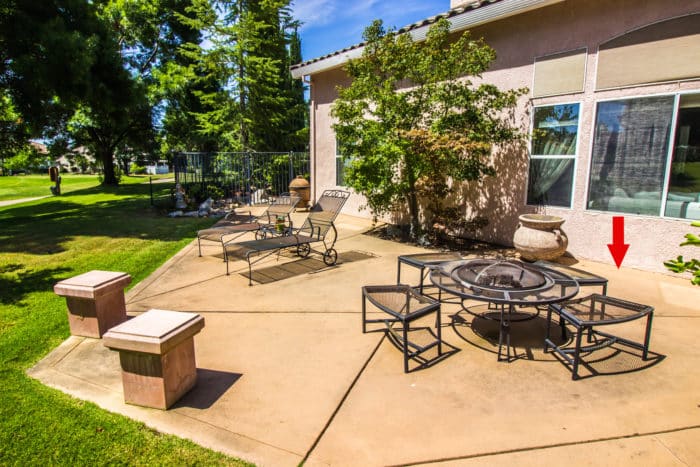
Usually if the weep screed becomes blocked, it is because the homeowner did one of the following:
#1. Added a concrete sidewalk or new concrete patio (as shown in above photo) that is up against the stucco and the top of the concrete is higher than the weep screed. This is extremely common.
#2. The homeowner added or did additional landscaping around the home in places. During this process they changed or added soil for planter beds or to achieve a special landscaping look. In this process, they inadvertently covered part of the stucco wall with soil or other material and in doing so, covered or blocked the weep screed.
#3. Added an enclosed planter against the stucco wall. In that process the planter or soil in it covered the weep screed.
#4. Painted over or caulked the small holes in the bottom of the weep screed. Doing this often blocks the water escape route through the weep screed. Learn more about weep screeds.

It is very common for new homes to have limited cracking; usually the cracks are small and most do not leak. The most common cracking on new homes is shrinkage cracking and it’s just part of the curing process. These cracks will usually have a random, spider web or a mapping type of look, and at times they are very small, microscopic in nature, and the naked eye cannot even see them.
There are some cracks which are a possible warning sign of serious stucco problems. They should be investigated and repaired or sealed as needed, otherwise you may face significant and costly repairs in the future. Cracks that allow moisture intrusion or are a sign of structural issues should be investigated by a professional and corrected as necessary. Delaying this process may be more costly, should there be a problem.
Keep your stucco maintained, do a yearly inspection and if under warranty and there is a possible problem, act before the warranty expires.

